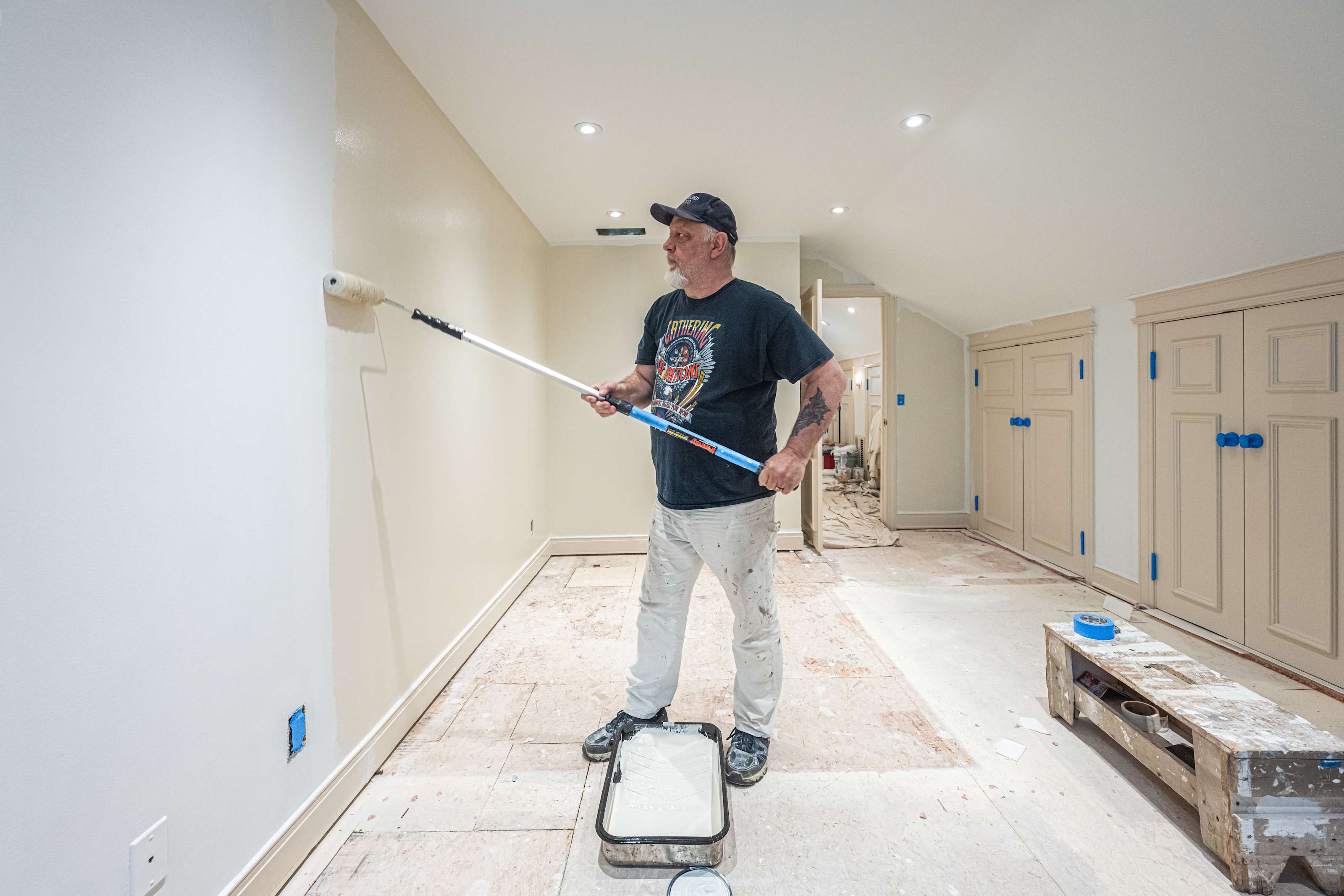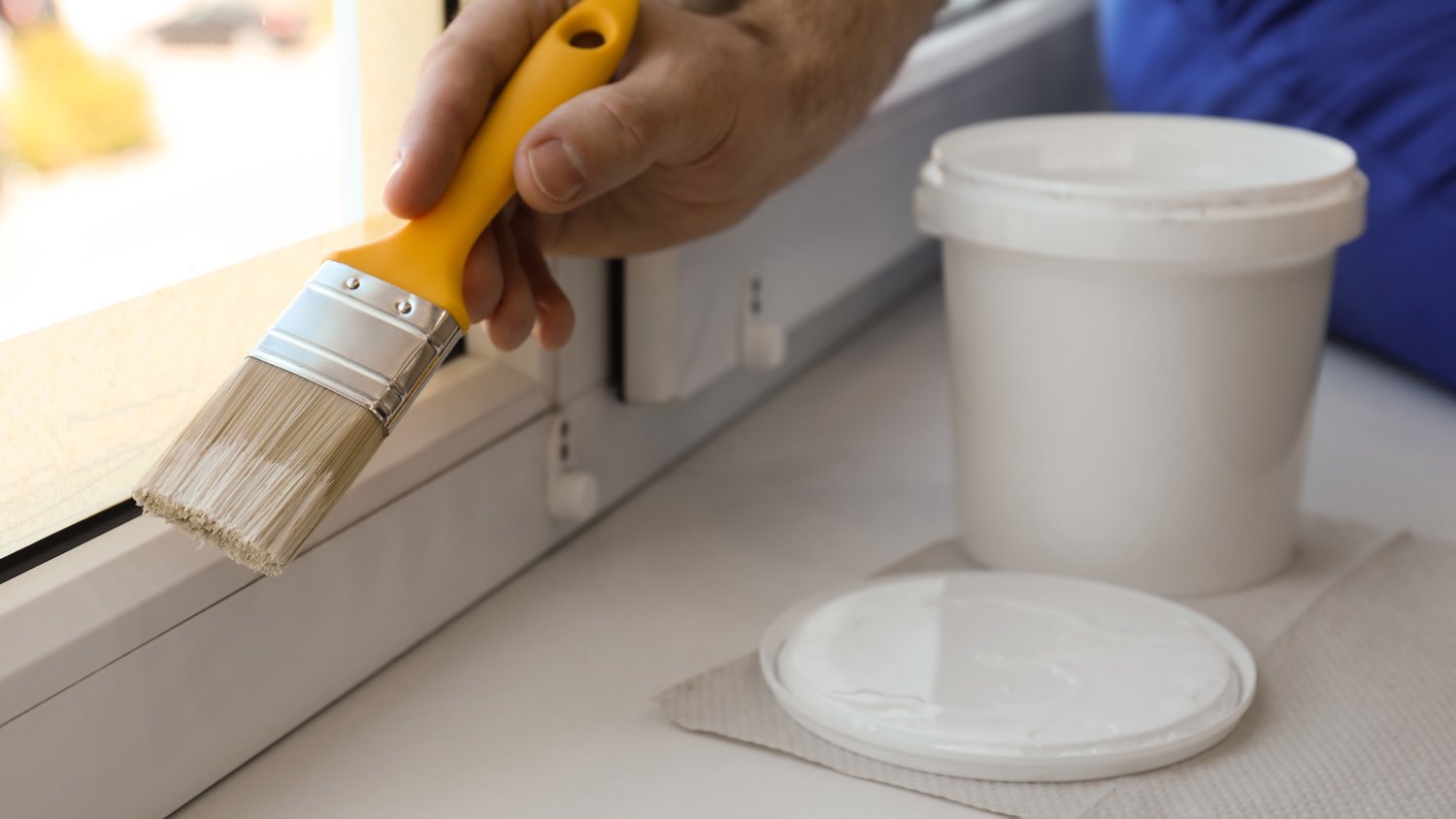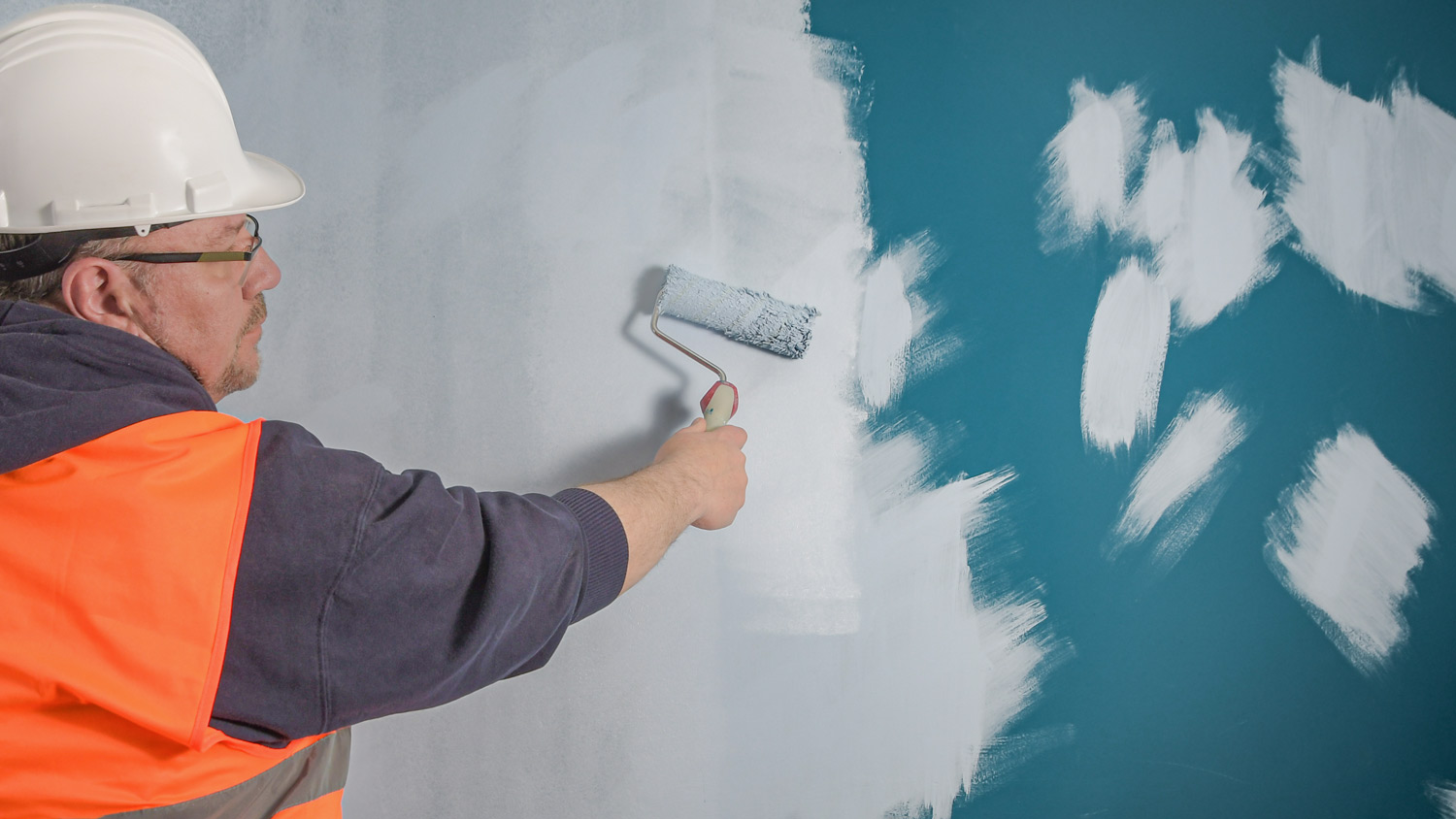
How much does it cost to paint a room? Learn what you’ll pay to give your space a makeover, depending on room size, paint type, the pro you hire, and more.
In most cases, one or two coats of primer will do the trick


Primer will help conceal imperfections, create a uniform base for paint, neutralize color, and help your paint adhere.
One coat of primer is sufficient on an undamaged surface, over a similar or lighter paint color, or when using a high-quality water-based primer.
Two coats of primer are better for slightly damaged surfaces, unfinished surfaces, painting over wallpaper, or masking dark colors with lighter colors.
You can use three coats if two don’t provide enough coverage, your surface is very uneven, or you need to conceal large stains.
You can forgo primer if you’re using a self-priming paint.
If you have a painting job, primer is likely on your radar. As long as you or an interior painting company near you apply it properly, it can help you avoid cracking, peeling, and other common issues with paint. Primer can also extend the life span of your paint, making it worth the cost.
In most cases, you’ll only need one or two coats of primer. However, the surface of the wall, color of the paint, and type of primer you use will all dictate the right number of primer coats. Below, we’ll dive deeper into what primer is and how much you should apply in different situations.

Primer is a base coat that you apply before you begin painting. It’s designed to prepare the surface and create a foundation for a good paint job. Primer contains more resin and less pigment than paint, significantly improving how well the paint adheres to the surface.
While there are several types of primers, the most common ones include water-based primers, oil-based primers, and shellac primers. Primer is typically white but you can tint it to match your top coat or paint color and minimize the number of coats you need. Primer is important for almost every paint job because it:
Creates a uniform base: This allows for a smooth paint application. It can also make it easier for you to complete your paint job in fewer coats, saving you time and money.
Neutralizes colors: Since primer neutralizes color coats, it can ensure your light or dark colors look great. With primer, their vibrancy will be more likely to shine through.
Conceals imperfections: Most surfaces have imperfections. Primer can conceal them so they aren’t as noticeable.
Allows the paint to adhere: Primer helps the paint or top coat to stick to the surface well. It can prevent cracking and peeling, ensuring everything lasts longer.
If you’re wondering whether you need primer to prep your walls for painting, the answer is likely “yes.” Prepping your walls is a good idea when you paint unfinished wood, paint over plaster and joint compound, apply latex-based paint on top of oil-based paint, and paint over new drywall. You should also use it if you choose lower-quality paints or know you’ll have to paint over mold or stains.
Painting over a surface that has grease or dust build up can cause the paint to apply unevenly, leading to a bubbly or rough texture with clear visible imperfections.

The ideal number of primer coats depends on the specifics of your project. Here are some general guidelines to keep in mind when tackling your next project.
A single coat of primer should be enough in these situations:
Your surface is in good shape.
You are painting over a similar paint color.
You’re switching from a light paint color to a dark paint color.
You’re using a quality water-based primer.
You’re using a tinted primer.
Two coats of primer make sense if:
Your surface is in poor shape.
You’re painting an unfinished surface, such as wood.
You have unfinished drywall or plaster.
You need to paint over wallpaper.
You’re masking a dark paint color with a light paint color.
Three coats of primer is rarely necessary. However, you may consider if any of these situations apply to you:
Your second coat of primer doesn’t seem to provide enough coverage.
You have to paint over a surface that is very uneven.
You need to conceal large stains.
If you’re still unsure of how many coats of primer you need, don’t hesitate to reach out to a local interior painter. You can also contact your paint manufacturer or take a look at the paint container to see if there are any recommendations.
If you stop into your local improvement store, you’ll notice countless primer options and might be wondering what paint primer you should use. Factors like your surface, budget, and goals will help make the most informed decision. However, here are the general rules of thumbs for the various primers you may come across:
Oil-based primers: These primers are ideal if you plan to use latex or oil paints on an interior or exterior paint job. They can conceal stains effectively but are slower to dry and also smell stronger.
Latex-based primers: Latex-based primers are water-based and often used in exterior applications to mask drywall. While they dry quickly and are pretty resistant to peeling and cracking, they may not be able to cover larger stains adequately.
Shellac primers: Shellac primers are compatible with latex and oil-based paints. If your goal is to block stains, these fast-drying primers are the way to go. However, be prepared for the strong smell.
From average costs to expert advice, get all the answers you need to get your job done.

How much does it cost to paint a room? Learn what you’ll pay to give your space a makeover, depending on room size, paint type, the pro you hire, and more.

Discover the cost to install window trim. Learn about price factors, labor, materials, and tips to save on your window trim installation project.

The price to paint your home’s baseboards depends on the square footage and whether you DIY the project. Learn more to budget for baseboard painting.

Learn how to paint paintable wallpaper to add texture and color while hiding imperfections on your walls with this handy step-by-step guide.

Curious about what's under old coats of wall paint? Learn how to remove paint from wood with these tricks to bring the wall, table, or home siding back to life.

Want a unique, natural look for your interior or exterior walls? Limewashing is a DIY-friendly option. Learn how to limewash walls with this guide.